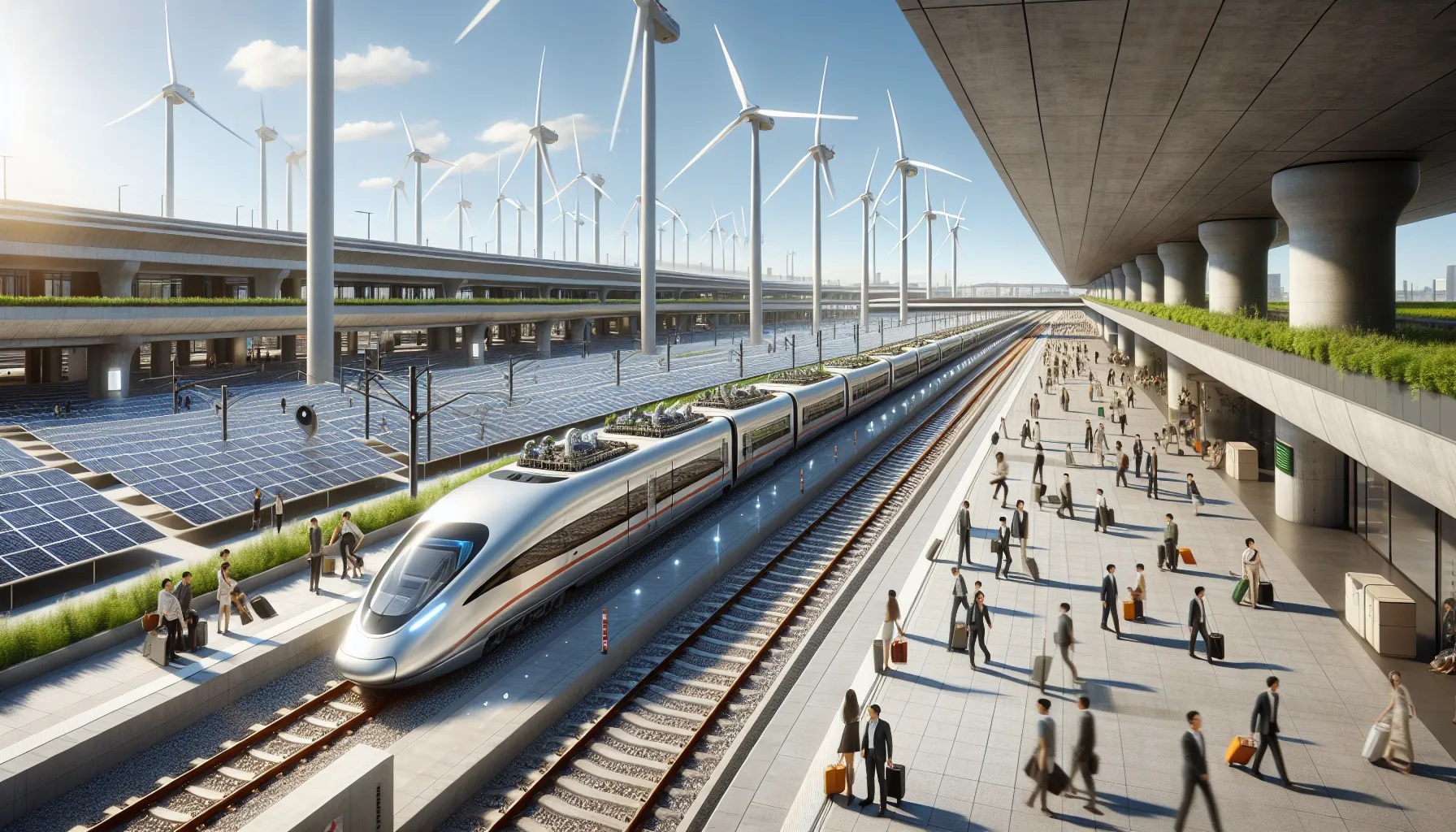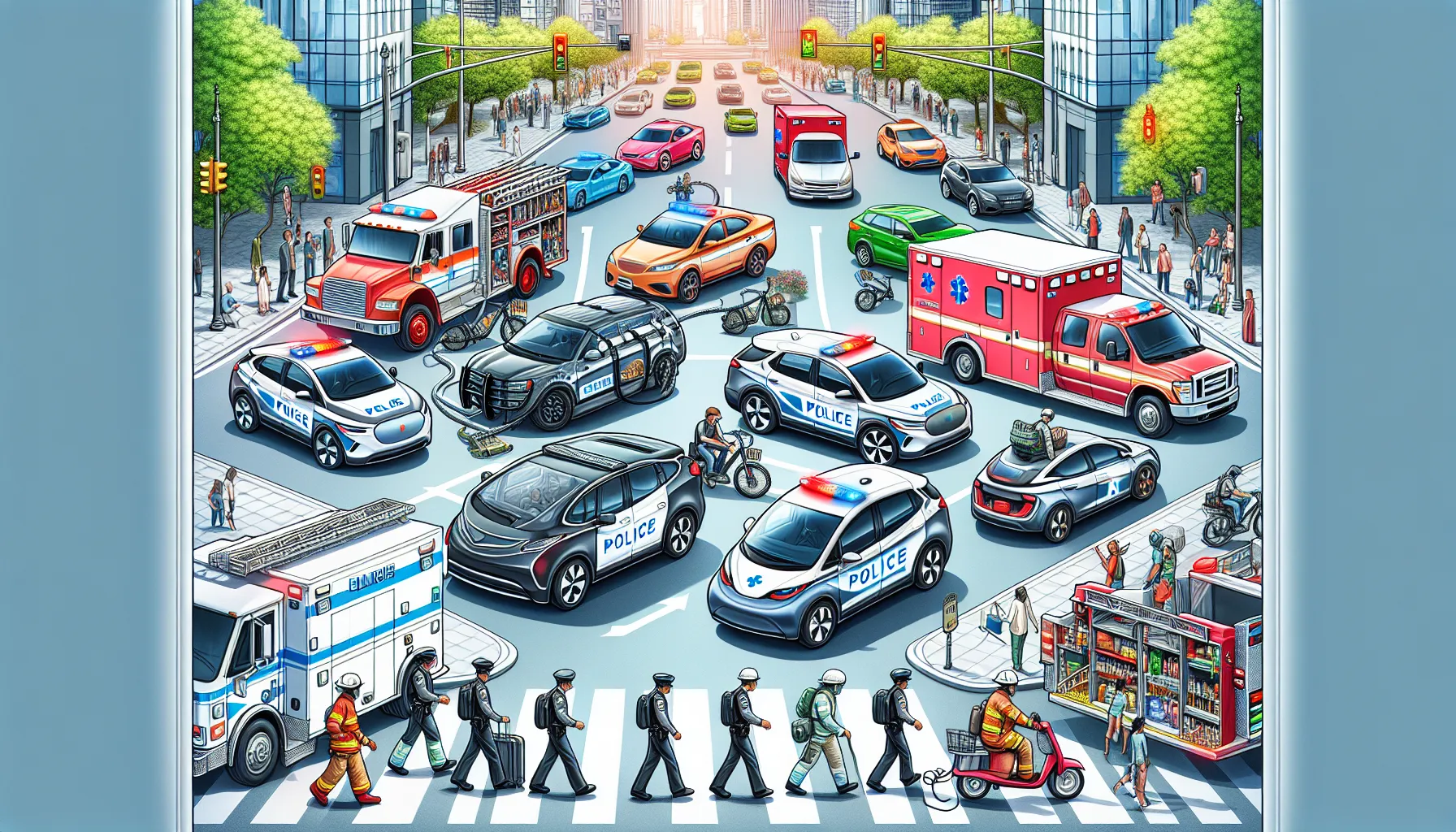Are you preparing for the IELTS Reading test and looking to improve your skills on environmental topics? Look no further! This comprehensive practice test focuses on the timely subject of “Electric trains for reducing carbon emissions.” As an experienced IELTS instructor, I’ve crafted this mock exam to closely resemble the actual IELTS Reading test, complete with passages of varying difficulty and a diverse range of question types. Let’s dive in and enhance your reading comprehension while exploring this crucial aspect of sustainable transportation.
Nội dung bài viết
- IELTS Reading Test: Electric Trains and Carbon Reduction
- Passage 1 (Easy Text)
- The Rise of Electric Trains
- Questions 1-5
- Questions 6-10
- Passage 2 (Medium Text)
- Environmental Impact of Electric Trains
- Questions 11-14
- Questions 15-19
- Passage 3 (Hard Text)
- The Socio-Economic Implications of Transitioning to Electric Trains
- Questions 20-24
- Questions 25-27
- Questions 28-30
- Answer Key
- Passage 1:
- Passage 2:
- Passage 3:
IELTS Reading Test: Electric Trains and Carbon Reduction
Passage 1 (Easy Text)
The Rise of Electric Trains
Electric trains have been gaining popularity as a means of sustainable transportation in recent years. Unlike their diesel-powered counterparts, electric trains produce zero direct emissions, making them an attractive option for countries looking to reduce their carbon footprint. The technology behind electric trains has been around for over a century, but it’s only in the past few decades that they’ve become a viable alternative for large-scale public transportation.
One of the main advantages of electric trains is their energy efficiency. They can convert up to 90% of the electrical energy they use into mechanical energy, compared to only 30-35% for diesel trains. This efficiency translates into lower operating costs and reduced environmental impact. Additionally, electric trains are generally quieter and provide a smoother ride for passengers, enhancing the overall travel experience.
Many countries are investing heavily in electrifying their rail networks. For example, the United Kingdom has set a goal to electrify most of its main lines by 2040, while China already boasts the world’s largest high-speed rail network, which is entirely electric. These initiatives are part of broader efforts to combat climate change and improve air quality in urban areas.
However, the transition to electric trains is not without challenges. The initial cost of electrifying rail lines can be substantial, requiring significant infrastructure upgrades. There’s also the question of where the electricity comes from – if it’s generated from fossil fuels, the environmental benefits are reduced. Despite these hurdles, many experts believe that electric trains represent a crucial step towards a more sustainable future for transportation.
electric-train-on-tracks|electric train|a modern electric train traveling on railway tracks surrounded by green scenery
Questions 1-5
Do the following statements agree with the information given in the passage? Write
TRUE if the statement agrees with the information
FALSE if the statement contradicts the information
NOT GIVEN if there is no information on this
- Electric trains produce no direct emissions while operating.
- The technology for electric trains is a recent invention.
- Electric trains are more energy-efficient than diesel trains.
- All countries have plans to fully electrify their rail networks by 2040.
- The source of electricity affects the environmental benefits of electric trains.
Questions 6-10
Complete the sentences below. Choose NO MORE THAN TWO WORDS from the passage for each answer.
- Electric trains can convert up to 90% of electrical energy into __ energy.
- Compared to diesel trains, electric trains offer passengers a __ ride.
- China has the world’s largest __ rail network, which is fully electric.
- Electrifying rail lines requires significant __ upgrades.
- Many experts view electric trains as a step towards a more __ future for transportation.
Passage 2 (Medium Text)
Environmental Impact of Electric Trains
The potential of electric trains to mitigate climate change has been a subject of intense study in recent years. As the transportation sector continues to be a significant contributor to global greenhouse gas emissions, the shift towards electrified rail systems presents a promising solution. However, the environmental benefits of electric trains are not as straightforward as they might initially appear, and a comprehensive analysis is necessary to fully understand their impact.
One of the primary advantages of electric trains is their ability to operate with zero direct emissions. Unlike diesel locomotives, which release carbon dioxide and other pollutants as they burn fuel, electric trains draw power from overhead lines or a third rail, producing no exhaust emissions during operation. This characteristic makes them particularly attractive for urban areas struggling with air quality issues.
However, the environmental footprint of electric trains extends beyond their immediate operation. The source of electricity used to power these trains plays a crucial role in determining their overall impact on carbon emissions. In regions where electricity is primarily generated from fossil fuels, the emissions are essentially shifted from the point of use to the power plant. Conversely, in areas with a high proportion of renewable energy sources, such as wind, solar, or hydroelectric power, the environmental benefits of electric trains are significantly amplified.
The life cycle assessment of electric trains also includes considerations such as the manufacturing process, maintenance requirements, and end-of-life disposal. While electric trains generally have lower maintenance needs compared to diesel locomotives, the production of batteries and other electrical components can have environmental implications. Additionally, the infrastructure required for electrification, including overhead lines and substations, must be factored into the overall environmental impact.
Despite these complexities, studies have consistently shown that electric trains offer substantial environmental benefits when compared to other modes of transportation, particularly in the long term. As power grids around the world continue to incorporate more renewable energy sources, the carbon footprint of electric trains is expected to decrease further. Moreover, the efficiency of electric motors and the potential for energy recovery through regenerative braking systems contribute to the overall sustainability of electric rail transport.
The transition to electric trains also opens up possibilities for innovative energy management strategies. For instance, the concept of using train batteries to store excess renewable energy and feed it back into the grid during peak demand periods is being explored. This bi-directional energy flow could potentially help stabilize power grids and increase the integration of intermittent renewable energy sources.
In conclusion, while the environmental impact of electric trains is not without nuances, they represent a significant step towards decarbonizing the transportation sector. As technology advances and power grids become cleaner, the role of electric trains in reducing carbon emissions is likely to become increasingly prominent, contributing to a more sustainable future for global mobility.
Questions 11-14
Choose the correct letter, A, B, C, or D.
-
According to the passage, the environmental benefits of electric trains are:
A) Always straightforward and positive
B) Never significant enough to matter
C) Complex and dependent on various factors
D) Only relevant in urban areas -
The text suggests that the carbon emissions of electric trains are most reduced when:
A) They are used in rural areas
B) The electricity comes from renewable sources
C) They are compared to airplanes
D) They use regenerative braking systems -
Which of the following is NOT mentioned as part of the life cycle assessment of electric trains?
A) Manufacturing process
B) Maintenance requirements
C) Fuel consumption
D) End-of-life disposal -
The concept of using train batteries to store excess renewable energy is presented as:
A) A currently widespread practice
B) An impossible idea
C) A potential future innovation
D) A major cause of environmental damage
Questions 15-19
Complete the summary below using words from the passage. Use NO MORE THAN TWO WORDS for each answer.
Electric trains offer significant potential for (15) __ climate change in the transportation sector. Unlike diesel locomotives, they produce zero (16) __ emissions during operation. However, the overall environmental impact depends on the (17) __ of electricity used to power the trains. In regions with a high proportion of (18) __ energy sources, the benefits are greater. The (19) __ of electric trains, including manufacturing and infrastructure, must also be considered in assessing their environmental impact.
Passage 3 (Hard Text)
The Socio-Economic Implications of Transitioning to Electric Trains
The transition from conventional diesel-powered locomotives to electric trains represents a paradigm shift in the realm of transportation, with far-reaching implications that extend well beyond mere technological advancement. This shift encompasses a complex interplay of economic, social, and environmental factors that collectively shape the trajectory of sustainable development in the 21st century.
From an economic perspective, the initial capital expenditure required for electrifying rail networks is substantial. This includes not only the cost of the electric rolling stock but also the extensive infrastructure modifications necessary to support electrified operations. Overhead catenary systems, substation construction, and grid reinforcements are among the myriad components that contribute to the significant upfront investment. However, this initial outlay must be contextualized within a long-term cost-benefit analysis that takes into account the reduced operational expenses associated with electric trains.
The operational efficiency of electric trains translates into lower energy consumption per passenger-kilometer or ton-kilometer of freight transported. This efficiency is further augmented by the potential for energy recuperation through regenerative braking systems, a feature unique to electric traction. Moreover, the simplicity of electric motors compared to internal combustion engines results in reduced maintenance costs and increased reliability, factors that contribute to a more robust and cost-effective transportation system over time.
The labor market dynamics associated with the transition to electric trains are multifaceted. While there may be a short-term displacement of workers skilled in traditional diesel locomotive maintenance, this is counterbalanced by the creation of new jobs in electrical engineering, power systems management, and advanced control technologies. The shift necessitates a concomitant evolution in workforce skills, driving investment in education and training programs to cultivate the expertise required for this new technological paradigm.
From a broader economic perspective, the electrification of rail networks can serve as a catalyst for industrial growth and innovation. The demand for advanced electrical systems, batteries, and control technologies stimulates research and development in these fields, potentially fostering the emergence of new industries and enhancing a nation’s competitive edge in the global market for sustainable technologies.
The social implications of this transition are equally profound. Electric trains, with their lower noise pollution and absence of local emissions, contribute to improved quality of life in urban and suburban areas traversed by rail lines. This can lead to increased property values and urban regeneration in areas previously blighted by the negative externalities of diesel rail traffic. Furthermore, the enhanced comfort and reliability of electric trains can make rail travel more attractive, potentially shifting modal preferences away from more carbon-intensive forms of transport such as private vehicles or short-haul flights.
The environmental benefits of electric trains, while significant, are not without complexity. The net reduction in carbon emissions is heavily dependent on the sources of electricity generation. In regions where the grid is predominantly powered by fossil fuels, the environmental advantages may be marginal in the short term. However, as power grids worldwide increasingly incorporate renewable energy sources, the carbon footprint of electric trains is set to diminish progressively. This creates a synergistic relationship between rail electrification and the broader transition to renewable energy, with each trend reinforcing the other’s environmental benefits.
The geopolitical ramifications of widespread adoption of electric trains are also noteworthy. Nations heavily dependent on imported fossil fuels for their transportation needs can achieve greater energy security through electrification, provided they have the capacity to generate electricity from domestic sources. This shift can alter international trade dynamics and potentially reduce geopolitical tensions associated with oil dependency.
In conclusion, the transition to electric trains represents more than a mere technological upgrade; it is a transformative process with profound implications for economic structures, social dynamics, and environmental sustainability. As nations grapple with the imperatives of climate change mitigation and sustainable development, the electrification of rail networks emerges as a key component of a broader strategy to reconcile economic growth with environmental stewardship. The success of this transition will depend not only on technological innovation but also on supportive policy frameworks, strategic investment, and a holistic approach that considers the multifaceted impacts of this paradigm shift in transportation.
electric-train-station-night|electric train station|a modern electric train station at night with trains at the platforms and city skyline in the background
Questions 20-24
Choose the correct letter, A, B, C, or D.
-
The passage suggests that the transition to electric trains:
A) Is solely a technological advancement
B) Has simple and straightforward implications
C) Involves complex economic, social, and environmental factors
D) Is too expensive to be practically implemented -
According to the text, which of the following is NOT mentioned as a benefit of electric trains?
A) Lower energy consumption per passenger-kilometer
B) Reduced maintenance costs
C) Increased cargo capacity
D) Potential for energy recuperation through braking -
The author suggests that the labor market impact of transitioning to electric trains:
A) Will only result in job losses
B) Will create new jobs while displacing some existing ones
C) Will have no effect on employment
D) Will only benefit electrical engineers -
The environmental benefits of electric trains are described as:
A) Universally positive regardless of electricity source
B) Negligible compared to other forms of transport
C) Dependent on the sources of electricity generation
D) Immediately apparent in all situations -
The geopolitical impact of widespread electric train adoption is said to potentially:
A) Increase dependency on oil-producing nations
B) Have no effect on international relations
C) Worsen tensions between nations
D) Reduce geopolitical tensions related to oil dependency
Questions 25-27
Complete the sentences below. Choose NO MORE THAN TWO WORDS from the passage for each answer.
- The initial __ for electrifying rail networks is substantial but should be considered in a long-term analysis.
- Electric trains contribute to improved __ in areas near rail lines due to reduced noise and emissions.
- The electrification of rail networks can serve as a __ for industrial growth and innovation.
Questions 28-30
Do the following statements agree with the claims of the writer? Write
YES if the statement agrees with the claims of the writer
NO if the statement contradicts the claims of the writer
NOT GIVEN if it is impossible to say what the writer thinks about this
- The transition to electric trains will immediately solve all environmental problems associated with transportation.
- The success of transitioning to electric trains depends on various factors including policy support and strategic investment.
- Electric trains will completely replace all other forms of transportation in the near future.
Answer Key
Passage 1:
- TRUE
- FALSE
- TRUE
- NOT GIVEN
- TRUE
- mechanical
- smoother
- high-speed
- infrastructure
- sustainable
Passage 2:
- C
- B
- C
- C
- mitigate
- direct
- source
- renewable
- life cycle assessment
Passage 3:
- C
- C
- B
- C
- D
- capital expenditure
- quality of life
- catalyst
- NO
- YES
- NOT GIVEN
This IELTS Reading practice test on “Electric trains for reducing carbon emissions” covers various aspects of the topic, from basic concepts to complex socio-economic implications. It’s designed to challenge your reading comprehension skills while providing valuable information on this important environmental issue. Remember to practice time management and develop strategies for quickly identifying key information in the text.
For more practice on related topics, you might find these articles helpful:
- Electric Trucks in Reducing Carbon Emissions in Logistics
- How Public Transportation Reduces Carbon Emissions
- Electric Trains as a Solution for Reducing Transportation Emissions
Keep practicing regularly and you’ll see improvement in your IELTS Reading skills. Good luck with your preparation!



